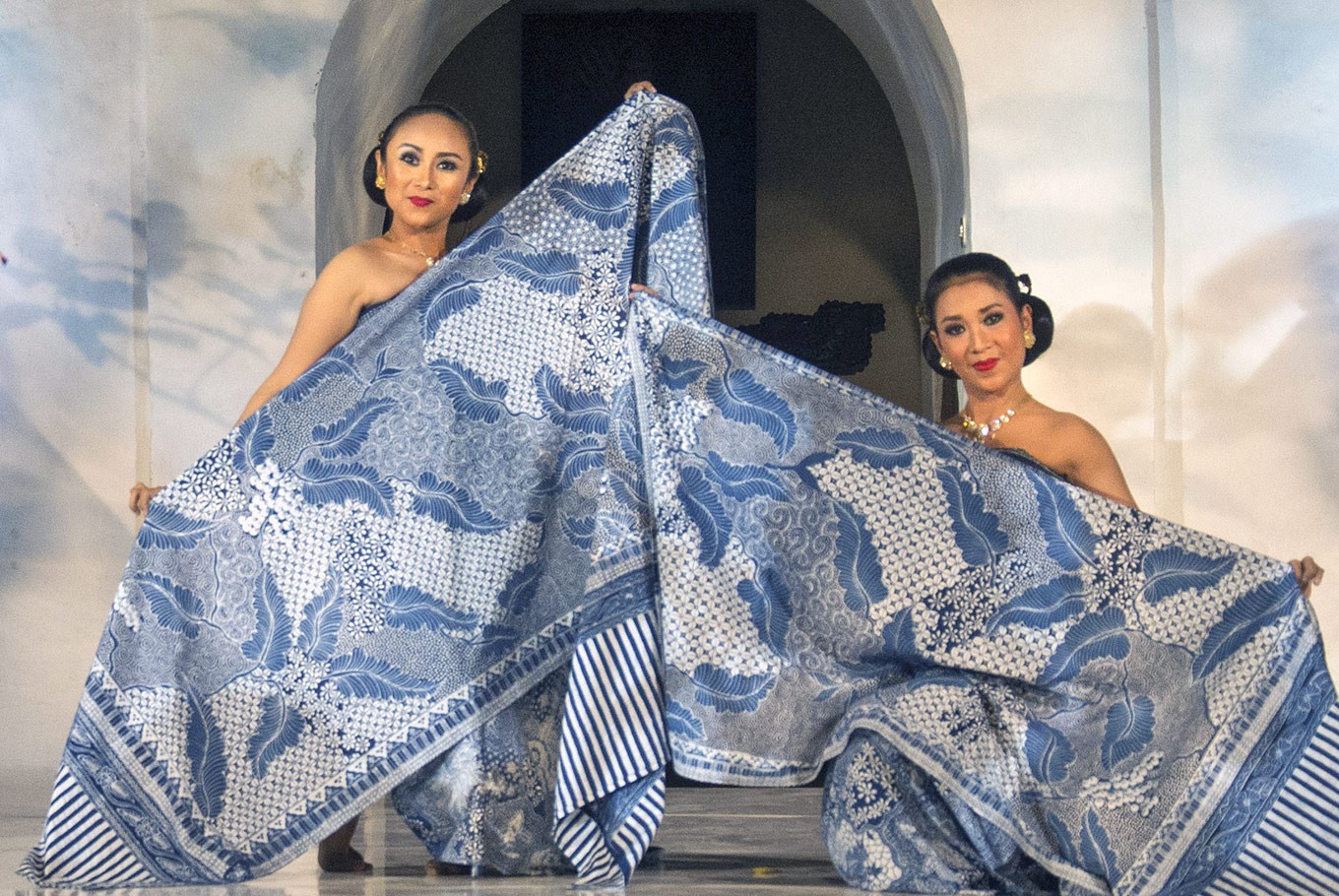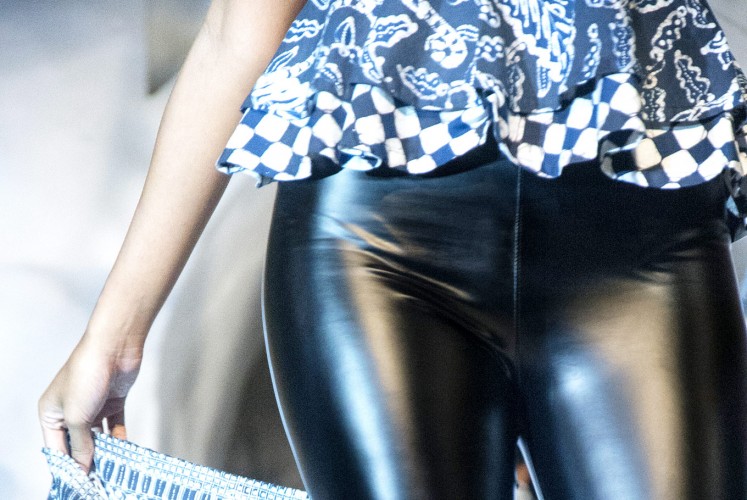ARTJOG: Fashion show a reminder of golden age of natural dye
One of the things that makes batik so distinctive is its natural dyeing technique, while the unique color of indigo blue holds a special place in the hearts of many.
Change Size
 History: The Kembang Kopi motif was inspired by the coffee flowers grown at Losari Coffee Plantation, in Magelang, Central Java. (JP/Tarko Sudiarno)
History: The Kembang Kopi motif was inspired by the coffee flowers grown at Losari Coffee Plantation, in Magelang, Central Java. (JP/Tarko Sudiarno)
T
he ongoing ARTJOG recently presented a batik fashion show that brought the audience back to the golden age of Indonesia’s natural dye indigo blue.
Organized by the Batik Jawa gallery, the fashion show served as a sideline event to the biggest annual contemporary art market in the country.
Held under the title of “A Decade of Indonesian Indigofera Revival”, the show presented various batik fashion products produced with the natural dye made from Indigofera Tinctoria, also called true indigo, and known as the “blue gold” of Indonesia.
Fashion show director Laretna T Adishakti said the parallel event was well suited to ARTJOG because the first Indonesian artist, according to fine art expert Sujoko of the Bandung Institute of Technology, was a woman.
“She was a Javanese woman who painted on material using a canting,” said Laretna, referring to the metal instrument used to apply boiling wax to cloth to make batik.
The fashion show — featuring the works of Nita Kenzo, Gut Poespo and Alyef R Wakhid — added another dimension to the contemporary artworks displayed for ARTJOG at the Jogja National Museum in Gampingan, Yogyakarta.
The show presented fine artworks applied to various fashion products and accessories such as decorative umbrellas, purses, fans and scarves. All were in indigo blue.
It was no surprise the fashion on display received warm appreciation from many, including art observers and critics. The items ranged from daily wear to official outfits created under the theme “Natural Indigo Batik for All Seasons”.

Laretna said there had been a movement to return to using natural dye in batik since 2008, following a national seminar held to celebrate the 100th anniversary of National Awakening Day on May 20, 2008.
“National Awakening Day cannot be separated from batik and woven cloth,” she said, adding that one of the efforts made was to establish a weaving school so Indonesia could compete with countries around the world.
In the 19th Century, she said, with the establishment of Boedi Oetama, a big change was made as chemical dyes were invented in Germany. Ever since, batik production has also used chemical dyes. In fact, in the past, indigo blue was an important export commodity for the Dutch colonial administration.
Only in 2008 was natural dye revived by batik lovers in Yogyakarta. “This year, Batik Jawa gallery wants to remember the revival of the ‘blue gold’ through the fashion show,” Laretna said.

She said the revival was inseparable from the role of Larasati Suliantoro, a local batik activist. In addition to re-introducing indigo dye, Larasati also introduced coffee flower motifs to batik in 2005.
Called Kembang Kopi, Larasati said the motif was inspired by the coffee flowers grown at Losari Coffee Plantation, in Magelang, Central Java. Later on, the motif was also mixed with motifs depicting other parts of the coffee tree, including the leaves, the seeds and the branches, creating batik with a flora motif.
For the fashion show, the Kembang Kopi motif was redesigned by designer Nita Kenzo. The new designs used indigo blue and were combined with various traditional batik motifs, creating beautiful combinations such as Kembang Kopi Laras Ati, Sekar Jagad Kembang Kopi, Kembang Kopi Nitik Semi, Kembang Kopi Sulur, and Kembang Kopi Pecah.
“Such combinations can hopefully save traditional batik motifs and at the same time develop natural indigo batik products for contemporary fashion,” Larasati said.









